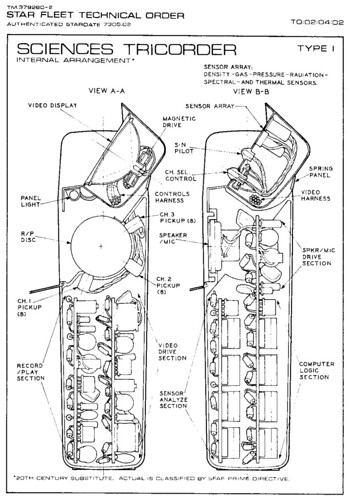
For anyone who hasn’t watched the amusing trekumentary How William Shatner Changed the World — please, treat yourself. It come back and forth to my mind as I hammer out some of the contours of design fiction thinking and practices.
The theme is quirky and done with a dose of hubris, of course, which adds a bit of geeky humor to the whole thing. But, the undergirding notion is that some of the instrumental and ontological furniture of the Star Trek future are found here, today. In some ways, with some of that furniture, we are in the Star Trek future. We don’t have intrepid, frontiersman space captain’s tear-assing around the universe, contemplating the ethics of Prime Directives. But, we do have things like Bones’ medical bay, at least in some parts of the world. We do have communicator like things, of course. And Shatner will take you to the folks who are today’s engineer-scientist geniuses who grew up on Star Trek and have come to him to help wonder about the role it played in their young lives, providing little sources of inspiration and contemplation and motivation.
At least, that’s how the story’s told in this clever, campy documentary. All the folks are real — they’re not making stuff up to bolster the Shatner ego. In all seriousness, what I find most intriguing is the implication here for this design fiction notion — that science fiction has always participated in creating future worlds.
More than the imagining, but the speculating, prototyping and thinking-through of the near future worlds we may want to inhabit. This is where the design component comes in — as a resource, actively engaged in the “engineering” of things, experiences, objects. It’s not an easy thing to do. Much of the work done today in making near future worlds wants to get down to the brass-tacks operations of things. Logistics. Pragmatics of markets. Instrumental aspects of making objects, forgetting too quickly the imagination. Dismissive of speculation and creative imagination. Not even considering the possibilities of telling stories to help think things through. It’s a peculiar, undisciplined approach to innovation — to doing things differently and finding new materialization practices.
There’s so much about Star Trek that lives outside of the television and movies themselves that shows the active hand of imagining in real, material ways all the bits and pieces below the surface. I’ll own up. I remain a huge Star Trek fan. I dug up my old Starfleet Technical Manual that I got with a fistful of dollar bills saved when I was a tiny boy, purchased at a real, honest-to-god Star Trek convention in New York City that my dad took me and my brother to. This imaginative book closes a lot of the gaps, helping to imagine the nuances of the Star Trek near future, making it seem more tangible and possible. The book is a kind of design prototyping — a sketchbook to help ponder one possible future world with all of its props, each behaving as a kind of conversation piece through which that future happens.
Continue reading Star Trek Embedded Culture